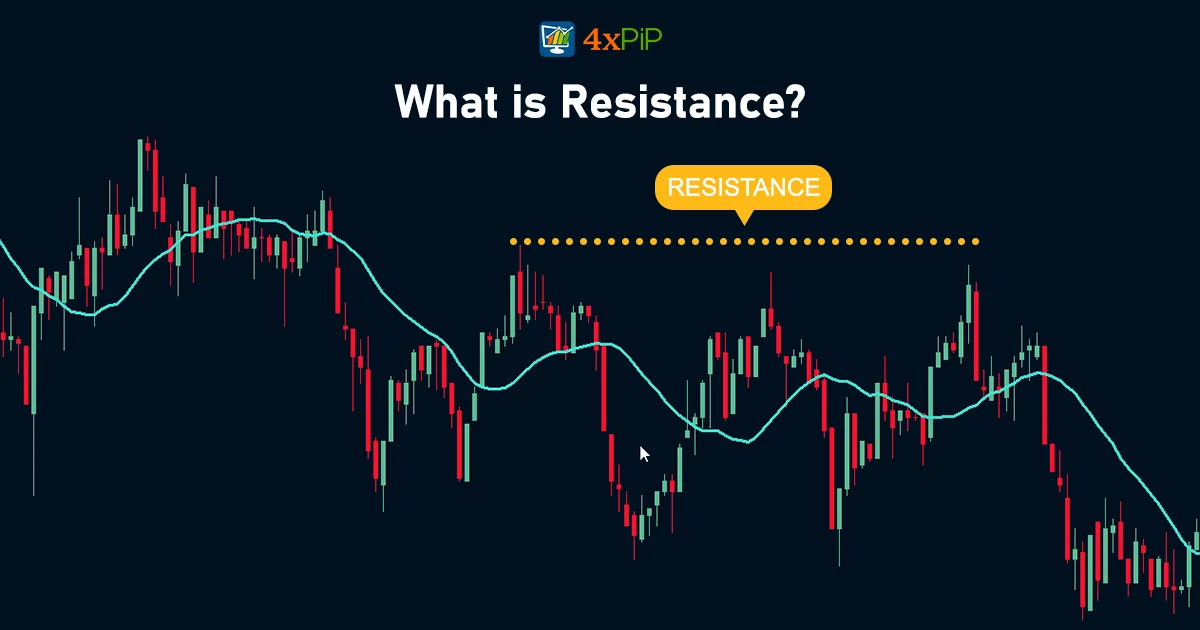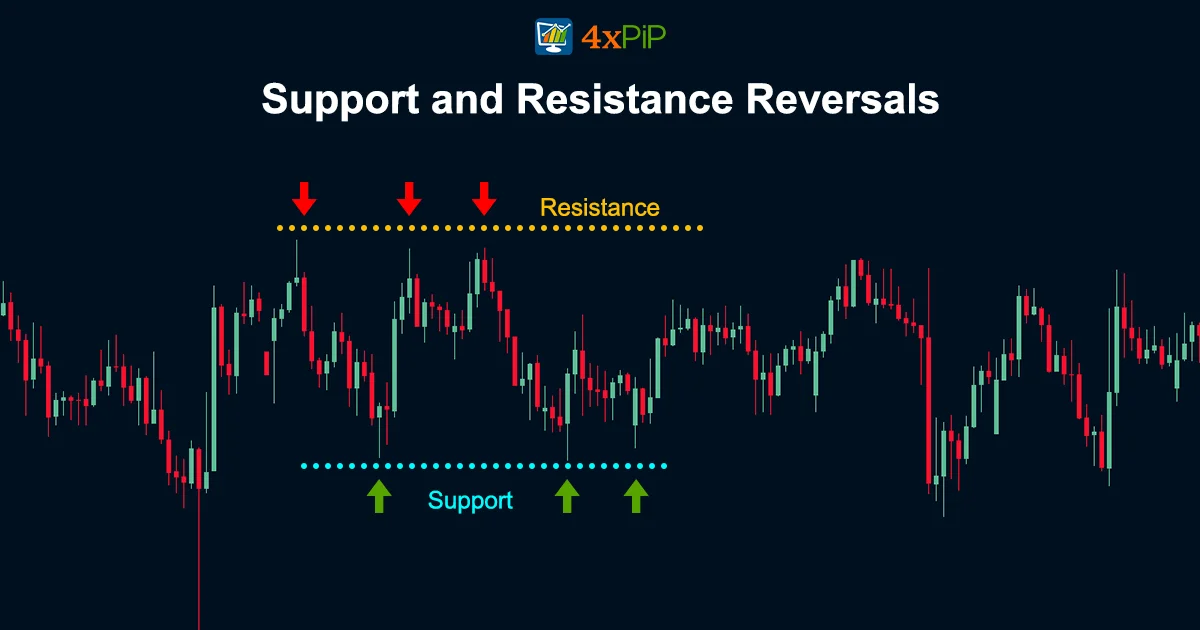Realizing about help and resistance is vital for merchants within the monetary markets. On this exploration, we’ll have a look at what help and resistance imply and why they matter in market actions. We’ll break down these key factors on a value chart and speak about how merchants use them to make good choices and enhance their buying and selling methods. Come alongside to grasp the fundamentals of help and resistance in buying and selling.
What’s Help?
When costs are taking place, it’s as a result of there’s extra stuff on the market than individuals wish to purchase. The decrease the costs go, the extra interesting they turn into to of us who have been ready to purchase. Finally, sufficient individuals wish to purchase at these decrease costs that it balances out with the quantity of stuff on the market. That’s when costs cease dropping – we name this “help.”
Help could be a particular value or a variety of costs on a chart. Both approach, it’s some extent the place patrons are prepared to leap in. At this degree, extra individuals wish to purchase than promote, so the worth stops taking place and may even return up.
What’s Resistance?

Resistance is when costs cease going up as a result of extra individuals are promoting than shopping for. This may occur as a result of merchants assume the costs are too excessive or have reached their goal. It may also be as a result of patrons don’t wish to purchase at such excessive costs. On a value chart, you may simply see a degree the place promoting turns into stronger than shopping for – that’s resistance.
As soon as we establish a help or resistance degree, these factors can be utilized for getting into or exiting trades. When the worth hits a earlier help or resistance degree, it is going to both bounce again or break by means of and proceed in the identical route till it reaches the subsequent help or resistance degree.
Some trades are timed based mostly on the concept that help and resistance ranges received’t be damaged. Merchants make predictions about whether or not the worth will bounce off or break by means of these ranges. In the event that they’re proper, the transfer will be vital. In the event that they’re flawed, the place will be closed with a small loss.
Help and Resistance Reversals:

When the worth of one thing tries to go up once more, a earlier degree the place it acquired help can act like a barrier, making it more durable to go up. On the flip aspect, a degree that acted as a barrier earlier than may turn into a help when the worth falls quickly.
Individuals who commerce and make investments use value charts to see the place these help and resistance ranges are. They take note of:
Variety of Occasions: The extra usually the worth hits a help or resistance degree, the extra vital it’s. When costs maintain bouncing off a degree, extra individuals discover, and it impacts their buying and selling choices.
Earlier Worth Motion: Help and resistance ranges matter extra in the event that they comply with large value adjustments. A sudden rise or fall will get extra consideration and could also be stopped by a stronger resistance degree in comparison with a gradual and regular motion.
Buying and selling Exercise at Sure Costs: If plenty of shopping for or promoting occurred at a selected value, that degree turns into a stronger help or resistance. Merchants bear in mind these ranges and use them once more. When there’s excessive exercise and the worth drops, individuals are more likely to promote when it comes again to that degree.
Time Body: Help and resistance ranges on longer-term charts (like weekly or month-to-month) are normally extra vital than on shorter-term charts (like one-minute or five-minute).
Shifting Averages
Many merchants use technical indicators like shifting averages to assist predict short-term momentum. As a substitute of drawing trendlines, some favor utilizing shifting averages as a result of they supply a smoother line on the chart. In easy phrases, a shifting common is a line that exhibits the typical value over a sure interval, serving to establish help and resistance.
Merchants use shifting averages in numerous methods, like predicting upward strikes when costs cross above a key shifting common or exiting trades when costs fall beneath it. No matter the way it’s used, a shifting common usually creates automated help and resistance ranges. Merchants experiment with totally different time intervals for his or her shifting averages to search out what works finest for his or her buying and selling.
Provide and Demand Zones:
Provide zones are value ranges the place a bunch of individuals wish to promote in monetary markets. Banks and massive cash gamers use fancy pc applications to search out these vital spots the place a lot of promoting or shopping for may occur.
If you hear a few provide zone, it means a value the place merchants normally promote stuff. It’s above the present value, suggesting there’s probability individuals will promote there. When the worth hits this degree, all of the promote orders get crammed, and the worth goes down. Have a look at the image beneath to see the way it works.
Within the image, the worth hits a zone and stays there for a bit earlier than taking place. This retains taking place till all of the promote orders are completed.
On the flip aspect, a requirement zone is a value degree the place merchants normally wish to purchase. It’s beneath the present value, displaying an enormous curiosity in shopping for. The demand zone attracts a bunch of patrons as a result of there are numerous purchase orders at that degree. Try the image beneath to get a greater thought of what a requirement zone appears like.
Conclusion:
To be a profitable dealer, it’s essential to grasp help and resistance within the monetary markets. These are particular value ranges or ranges on a chart which have a big effect on market conduct and affect buying and selling choices. Realizing their significance helps you expect value actions, time your trades effectively, and enhance your general technique. As you begin buying and selling, 4xpip is your dependable accomplice, offering knowledgeable insights and superior instruments for a easy buying and selling expertise. Try the assets and merchandise at 4xpip to boost your buying and selling expertise. For help, contact our buyer help at [email protected]. Elevate your buying and selling with 4xpip – your gateway to success within the finance world.
FAQs
What’s Help in buying and selling?
Help happens when costs appeal to patrons, balancing the supply-demand equation. It halts the descent of costs, signaling a possible upward motion.
Is Help at all times a selected value?
Help can manifest as a selected value or a variety on a chart. It signifies a degree the place shopping for curiosity surpasses promoting strain.
How does Resistance affect market dynamics?
Resistance emerges when extra sellers than patrons are current, impeding upward value motion. It displays a degree the place promoting power outweighs shopping for curiosity.
Are Help and Resistance ranges helpful for merchants?
Sure, merchants make the most of these ranges to time entries and exits. Costs usually react at these factors, both bouncing off or breaking by means of, offering buying and selling indicators.
What position do Help and Resistance play in reversals?
Earlier help ranges can hinder upward motion, appearing as boundaries. Conversely, earlier resistance ranges could remodel into help throughout short-term value declines.
Why do merchants take note of the variety of occasions a degree is hit?
The frequency of value hitting a help or resistance degree enhances its significance. Repeated bounces off a degree affect buying and selling choices.
How does earlier value motion have an effect on the significance of those ranges?
Help and resistance ranges acquire prominence after vital value adjustments. Sudden rises or falls appeal to consideration, impacting the power of those ranges.
Why is buying and selling exercise essential in figuring out help and resistance?
Ranges the place substantial shopping for or promoting occurred turn into strong help or resistance. Merchants recall these ranges for future choices.
What’s the relevance of the time-frame in help and resistance evaluation?
Longer-term charts, like weekly or month-to-month, maintain larger significance in figuring out help and resistance in comparison with shorter-term charts.
How do Shifting Averages contribute to help and resistance?
Shifting Averages, a well-liked technical indicator, provide a smoother trendline on charts. They function automated help or resistance ranges, aiding merchants in predicting market momentum.




